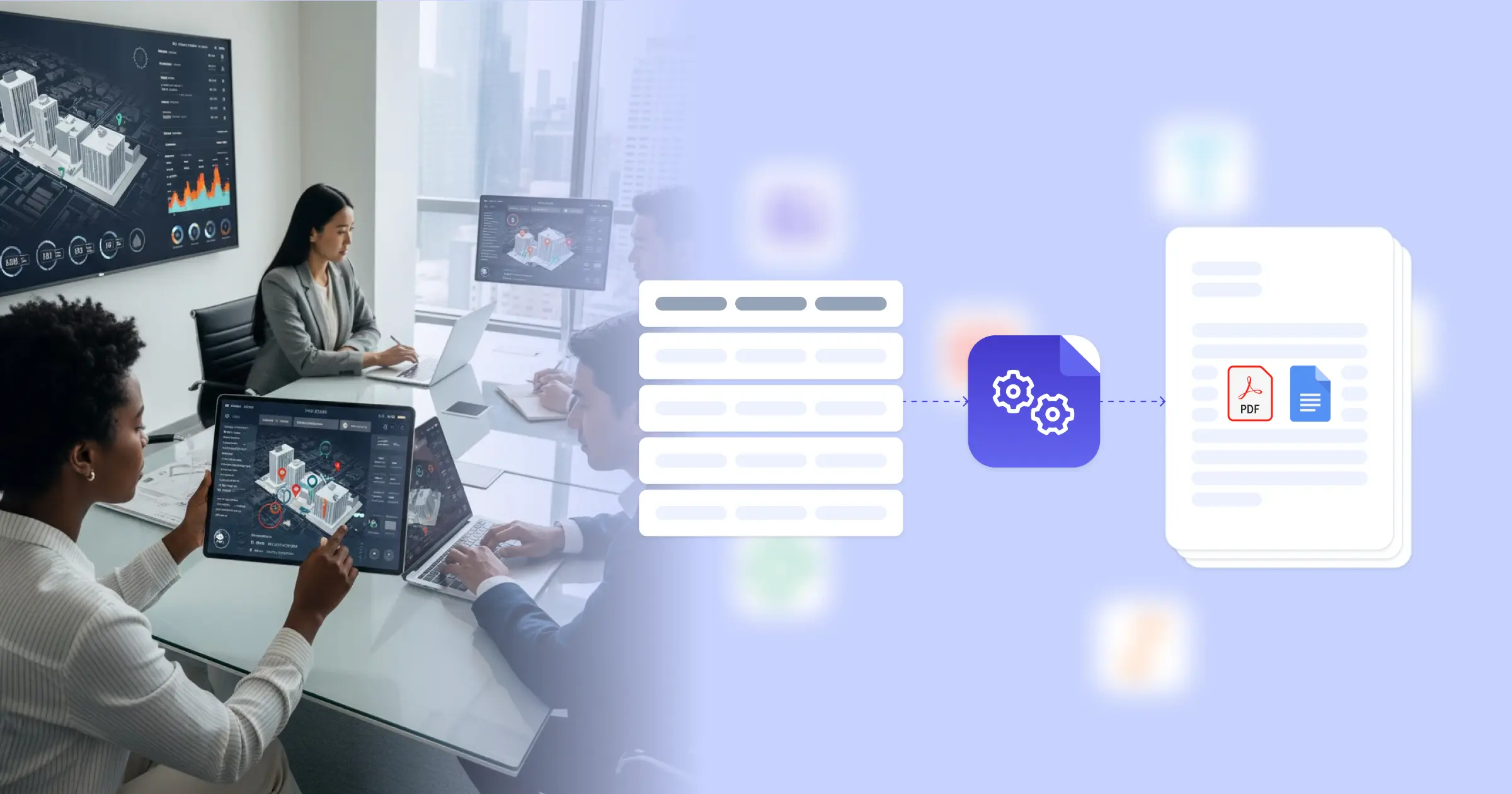
Understanding Document Automation Apps for Commercial Real Estate Organizations
Commercial real estate transactions and property management generate hundreds of documents annually, from lease agreements to offering memorandums to tenant communications. As the commercial real estate sector increasingly adopts technology to improve operational efficiency, document automation apps for commercial real estate transform how teams convert property data into the formal documents deals require. Instead of manually reformatting property details, financial terms, and legal provisions for each transaction or tenant communication, an automation app generates these documents directly from your existing data sources.
For teams managing multiple properties, processing frequent lease transactions, or coordinating between acquisitions, leasing, and asset management functions, this eliminates the bottleneck of document preparation. When a new lease term sheet gets negotiated or a property goes to market, you generate complete documents immediately rather than waiting for manual drafting cycles. The specific demands of commercial real estate operations explain where automation delivers the most value.




























